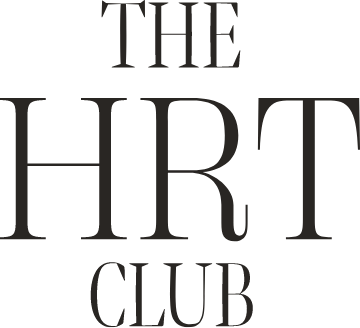Menopause isn’t a hurdle, it’s a stage of life that deserves understanding, fairness, and true support. Let’s make it part of the workplace conversation for this Menopause Awareness Month.
Attribution: Image by Freepik
Medically Reviewed by Andrea Caamano, Director of Medical Affairs, The HRT Club
Menopause does not just happen in a vacuum. For many, it arrives right in the middle of the peak career. Yet its effects on work life, career advancement, and day to day structure are rarely discussed openly. Many experience brain fog, fatigue, sleep disruption, hot flashes, mood shifts, and memory lapses. These symptoms may often overlap with tasks we rely on most, such as focus, decision-making, stamina, and confidence.
The stakes are real. A large study from Mayo Clinic Proceedings found that among U.S. women surveyed, 13.4% reported at least one adverse work outcome due to menopause symptoms; 10.8% missed at least 3 days of work in the year prior. New Swiss research also highlights this challenge: 33% of working women reported changing, pausing, or reducing work due to menopause, 16.4% changed jobs, and 20.5% reduced working hours.
Additionally, according to a National Women in the Workplace Survey of 1,010 U.S. women aged 50 to 65, 4 in 10 said menopause symptoms interfere with work performance or productivity on a weekly basis; 1 in 4 felt their symptoms negatively impacted their career development or opportunities; ~17% have considered or actually quit a job because of menopausal symptoms.
Our own survey of over 1,000 perimenopausal and menopausal women aged 45 to 60 highlights the day-to-day realities even more starkly:
-
66% said their daily productivity at work has diminished due to their symptoms.
-
75% reported poor sleep has impacted their focus.
-
69% said irritability and mood swings have affected their work relationships.
-
34% said they had to call out of work due to crippling menopause symptoms.
These results make it clear: menopause is not just a personal health issue, it has real and tangible effects on professional performance, relationships, and career momentum.
When unaddressed, symptoms may lead to reduced visibility, reluctance to take on big projects, or even worse, stepping out of roles or slowing momentum. But this doesn’t have to be the narrative.
How Everyone Can Do Better: Tips and Ideas Backed by Research
Here are a few concrete tips to make work more menopause-friendly, for individuals, teams, and organizations as a whole:
For Individuals
- Track symptom patterns
Keep a simple log (daily or weekly) of when symptoms spike; date, duration, triggers. That data helps spot patterns and prepare for “hard days.” - Strategic scheduling
Tackle cognitively demanding tasks when you feel freshest (often mornings), and defer lower-stakes tasks (emails, admin) to “fuzzy” hours. - Micro-breaks & breathing resets
Use short breaks (even 2 to 3 minutes) to step away, hydrate, stretch, or do deep breathing. These can reset focus when brain fog or irritability kicks in. - Temperature control & comfort tools
Layer your clothing, keep a fan nearby, use desk humidifiers or cooling tools, and adjust lighting to reduce glare (that can exacerbate headaches or eye strain). - Open conversations (when safe)
If comfortable, share with a trusted colleague or manager how your symptoms affect your workflow. Being proactive can reduce misunderstandings.
At the Team and Manager Level
- Awareness training & normalization
Workshops, learning sessions, or resource sharing help demystify menopause. Normalize it as part of life, not a fringe issue. - Flexible work arrangements
Offering hybrid options, flexible hours, or remote days gives employees ability to adjust when symptoms are intense. - Adjustments, not overhauls
Small accommodations make a difference: cooler meeting rooms, ability to stand or move during long calls, short breaks, quieter spaces, adjustable lighting. - Mentorship & career support
Encourage women in midlife to take on high-visibility projects, sponsor their growth, check in on obstacles they may face, especially when symptoms are severe. - Policy & supportive culture
Consider formal menopause policies (or guidelines) that outline accommodations, rights, and support. Make “reasonable adjustments” explicit.
Research shows workplace interventions can reduce symptom burden and improve productivity. A 2023 review found that employer programs (like education, flexible working, environmental adjustments) were effective in helping women manage symptoms while staying engaged at work.
A More Empowered Future: What “Menopause at Work” Could Actually Look Like
Imagine a workplace where menopause is treated like any other stage of life: visible, respected, and supported. In such organizations:
- Women feel safe disclosing challenges without stigma.
- Mid-career talent stays; they don’t step back or leave due to unmanaged symptoms.
- Leadership sees the value in investing in retention and tailored accommodations.
- Menopause is included in inclusion and wellness conversations.
- Career paths remain open and accessible during this transition.
Women aren’t not asking for “Special Treatment”, they are asking for equitable adjustments and fair understanding. That allows seasoned professionals to continue leading, innovating, and contributing without being derailed by something that affects so many.


